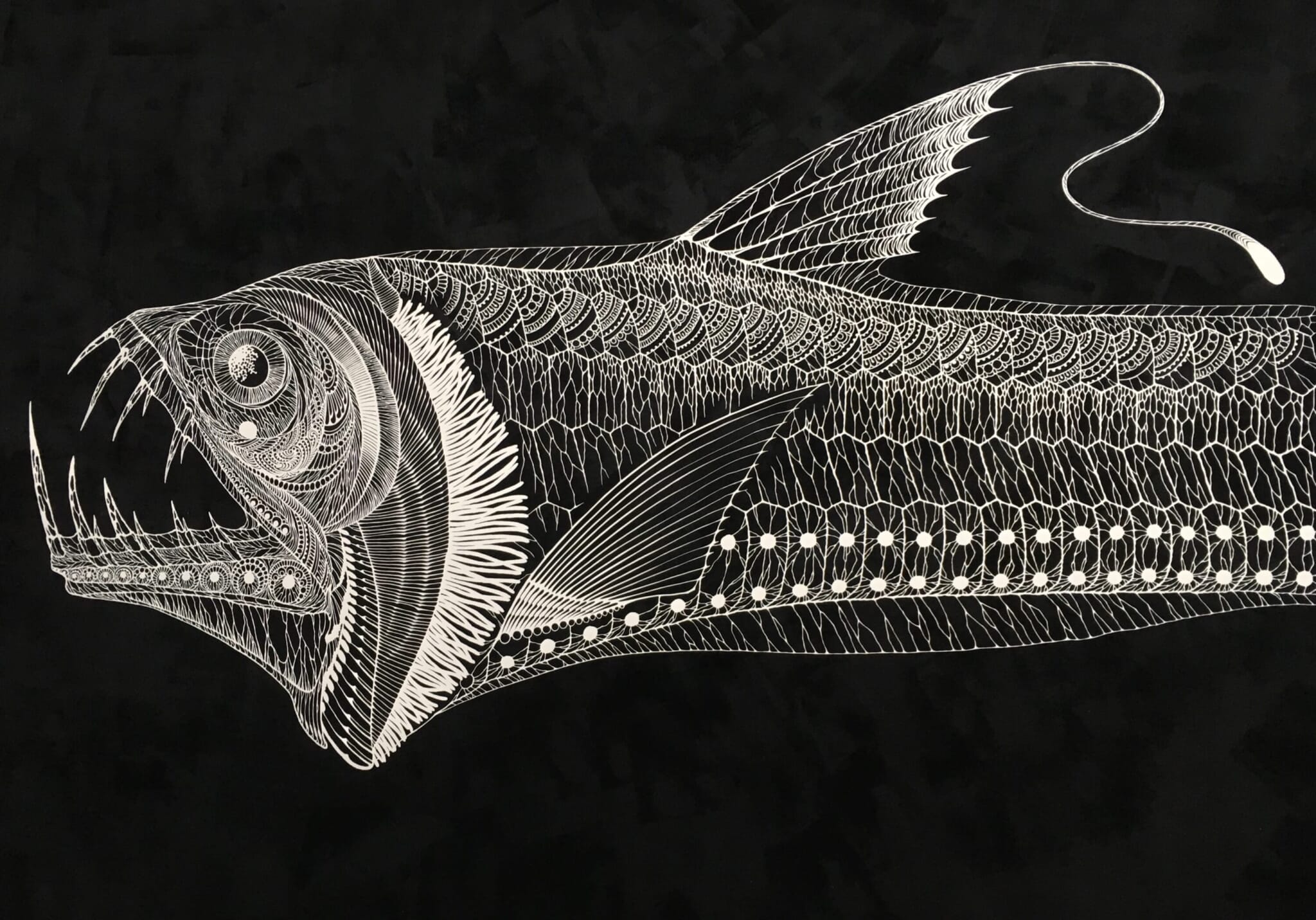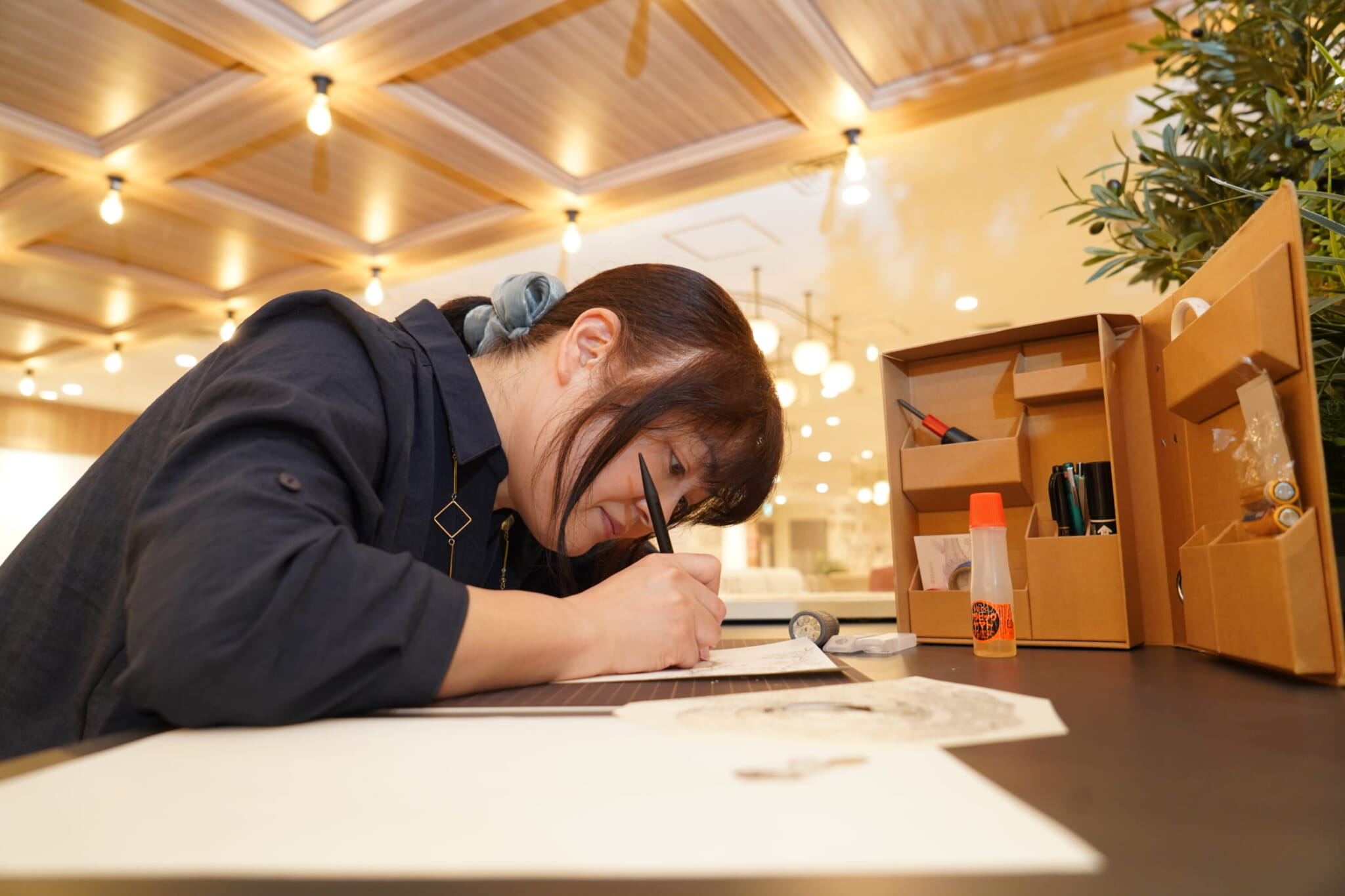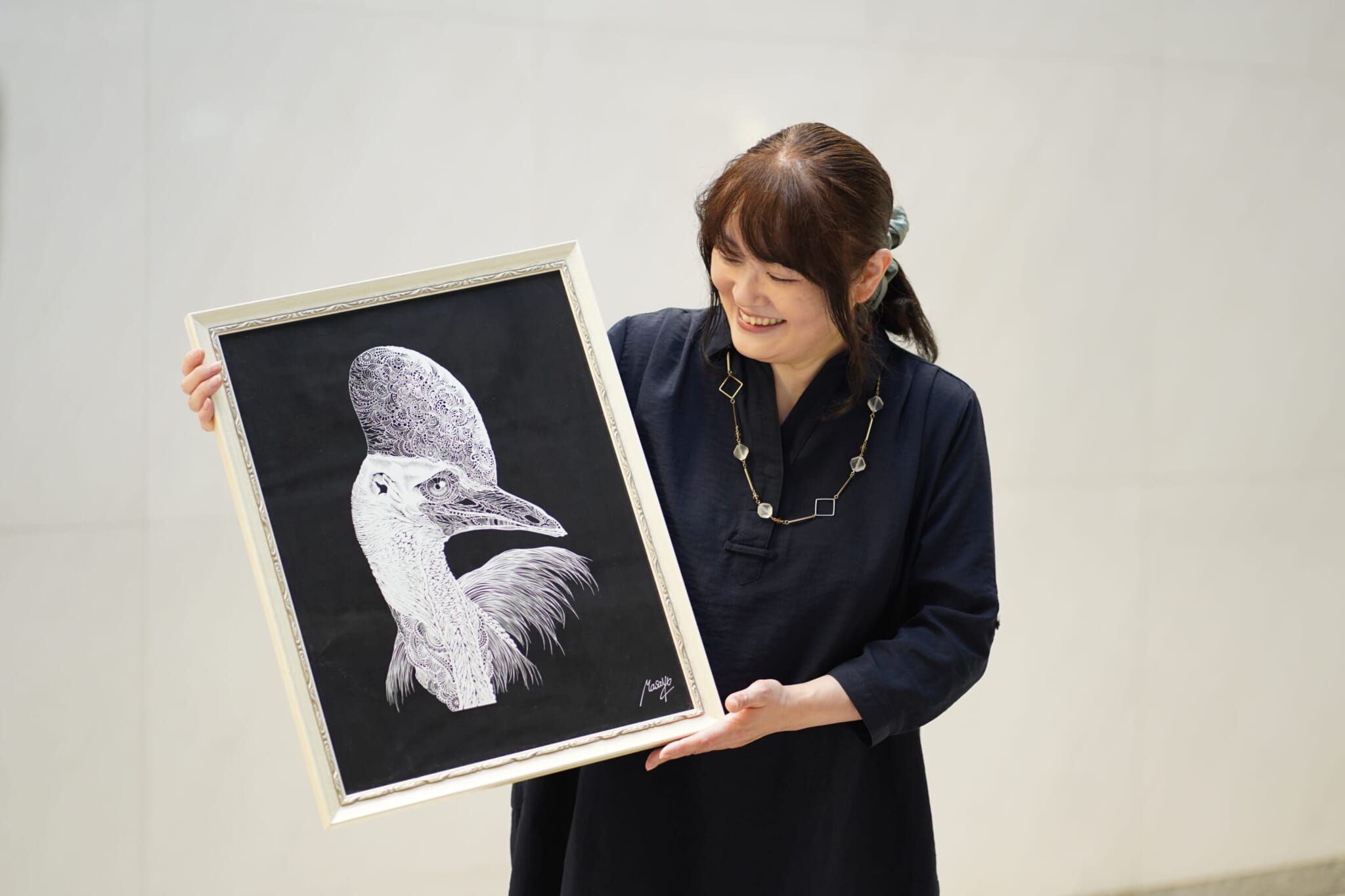Kiriken Masayo gets up at 3am and starts cutting. She eats breakfast, and at 9am, she heads to work, where she repairs watches. She eats lunch, mends more watches, then heads home again. After dinner and a bath, she goes to bed, sleeping for four hours before rising again at 3am to begin another day. And so it goes.
Masayo Fukuda is her real name, but she’s been using Kiriken — an amalgamation of “kirie,” the Japanese word for paper-cut pictures created with only paper and a cutter, and “kendama,” the Japanese spinning top she often practiced with her family — for years. And it fits: Kiriken has been cutting paper for over 30 years, and she’s garnered a large following thanks to her incredibly detailed designs ranging from underwater creatures to woodland critters. Her creative concept, “one paper, one color,” means she uses only one sheet of paper in plain white. She then brings each subject to life using gradation to give it the illusion of being three-dimensional.
A Creative Start
Kiriken was born into a crafting family and grew up surrounded by art. When she was a child, she would be given paper and pencils rather than typical children’s toys, and she remembers watching her father make spinning tops out of acorn hats. Her elder sister was an avid painter, too, so Kiriken feels it’s somewhat natural that she herself grew up to be an artist.
After painting and drawing for most of her youth, she was introduced to kirie at 18 years old and found herself hooked from the start. Over the years, she refined her technique, taking on a job as a watch repairer to support her creative pursuits. “I took some of my kirie to the interview,” she says with a laugh, explaining that her paper-cutting passion helped her land the job. It played a part in her personal life as well: She had already started kirie when she met her late husband, who related to her zeal, as he was also brought up in a creative family.
It’s clear that the support of the people around her has allowed her to keep crafting in earnest. “I think he knew that he was going to go,” she says, referring to her late husband, who passed away suddenly in 2019. “He arranged a lot of things just before he died, like making me a studio and even finding an agent I could trust,” she continues. “I’m terrible at messaging, and he helped me with that. It’s thanks to him I can keep doing kirie now.”

Breathing Life into Paper
Kiriken is almost unfathomably diligent, creating for several hours before work every day. She thinks of an idea, draws it with incredible intricacy, then gets to work cutting. The level of detail in her pre-cut pictures is breathtaking; she draws animals to life — and then somehow makes them even more vibrant with her blade, slicing away the finest details into even finer paper cuts as she turns her pencil drawings into the most delicate lace.
At first glance, her artworks seem to be monochrome drawings, perhaps paintings. Considering the amount of complexity of each one, it’s hard to imagine they could be anything else. She posits that this may be why her “Hand” series, which saw her place the artworks on her hand to illustrate their lacy consistency as opposed to laying them out flat and framed, gained her hordes of new fans. Seeing the artworks in the real world enabled viewers to grasp a somewhat bemusing concept: Not only can someone draw this beautifully, but they can cut their drawings to shreds, almost paradoxically upgrading them in the process.
A Paper Artist
When I ask whether she considers herself a maker or an artist, she shares her frustration. “When paper art tries to depict something realistic, it ends up being labeled as ‘craft-making,’” she says. “I don’t really understand why that is. As a paper cutter, I start everything from zero, drawing my idea and then cutting from that.”
She continues, “When I was young, I spent hours poring through encyclopedias, finding strange creatures. I use these in my work, focusing on the eyes and face to bring them to life. If I used a different medium — if I were a painter, for instance — I’m sure people wouldn’t consider me a maker.”
Hearing her explain her thought process in this way and knowing she’s bound by the restraints of her “one paper, one color” concept, I understand why she would be tired of a craft-making association over an artistic one.

Anyone Can Try Paper-cutting
Kiriken is probably one of the most famous kirie artists in the world, but when I tell her this, she is coy. Anyone can do it, she tells me, and insists that it’s not hard at all, that there are still so many different possibilities in the world of paper cutting. She pioneers the 3D gradation you can achieve with the art form and maintains that it’s not as difficult as it looks.
Additionally, she has a secret she thinks will encourage more people to pick up paper and a craft knife: glue. “It’s impossible without glue,” she says. “I keep a tube on hand for any mistakes when I’m cutting; if I cut through something by accident, I simply glue it back again. You can’t see it, but there is so much glue on my work.” She giggles as she holds up a tube to illustrate her point, declaring “I wouldn’t be able to create without it.”
While I’m not convinced that just anyone can create the kind of incredible works that Kiriken produces, I do believe that everyone should give it a try.









